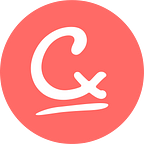The dilemma of designing new, distinct and efficient visual identities, and to convince it’s qualities to the human set of mind.
We learn by experience, and we learn more from our failures than from our successes. We have done so from the dawn of time. While a failure can be broken up in it’s different components and stages, success only flows along. Not that it isn’t equally difficult to achieve, successes are often harder to decipher.
Successes can be repeated by doing exactly the same over and over. Failures happens more often when one tries to do things differently. I have to add that a success doesn’t have to be overwhelming, it’s just something that isn’t a failure. How can this be relevant for creating visual identities for products or businesses? We’ll come back to that.
A failure can be a success or vice versa. Countless times in history, failing to achieve the initial goal has led to the coincidental discovery of something else. Columbus set out to find India, only to land in the Americas. 3M engineers tried to invent a strong bonding glue, but ended up creating the sticky part of what were to become the Post-It Notes.
We don’t have to look among ground-breaking inventions and discoveries to see the advantages of such fortunate mishaps. Evolution in general is proof of that. We develop through coincidental mutations. While poorer eye-sight will hamper, a randomly developed better eyesight would be highly beneficial, as described by Charles Darwin in his theory of evolution.
To be able to learn from our experiences, the circumstances must stay the same. To learn how to survive in one situation isn’t always useful in an other. That’s why we prefer normality. When things stay the same we can utilize our learning in a better way. There is quite a distance between game-changing occurences and the conformity of not rocking the boat.
When people are asked what’s pretty, they tend to point to what’s most normal. We can even feel uneasy by extraordinary things. It’s in these conditions designers are set to create something out of the ordinary, whether it’s a corporate identity, a logotype or an innovation. To create unique visual identity is our main concern, and our most frequent headache.
Adopting to unusual visual appearances takes time, but in this case we’re not created equal. While some people respond in a positive way instantly, other might never adopt wholeheartedly. What we know, however, is that this unsettling uniqueness is more important than we tend to think.
What if all kinds of fruit looked the same? We know that around 80% of all berries in the world are more or less poisonous. What if we can’t spot the vital differences? Luckily, evolution and natural mutations have made it easier by giving our beloved raspberries, gooseberries, currants, blueberries and strawberries, which actually is a fruit, unique appearances.
Think of all the things that surrounds us, and how important it is to recognize them. We appreciate most of them, either because they’re visually outstanding or by their contextual appearances. A special part of our brain deals with face recognition. We have the ability to remember close to 10 000 faces because to survive, we have to be able to separate friends from foes.
Being able to read facial expressions and body language extends those abilities. Likewise, our ability to signal through this kind of communication are equally important. Non-verbal communication and to be easily read helps us more than putting on a great poker face. At best, a poker face can be applied to cover up our fears or other shortcomings.
Our genes give us two tasks, to survive and to multiply. Evolution has given us senses and skills to secure those tasks. Our ability to smell, hear, feel, taste and see are provided to protect us, and they don’t change much over time. Mentally, we evolve slowly. A part of our brain is still reptilian. Into this context we are supposed to design and provide distinct and unique visual identities for both products and enterprises.
In an animal world, nature has three approaches. To blend into our surroundings, to scare off predators and last, but not least, to attract a mating partner. Commercially it’s not wise to blend in, although most companies and product do. In a visual context, scaring is most often used to scare off people outside the group, like parents. What we really seek is visual attraction.
Moving with the herd or staying the same provides a good platform for learning from our experiences. That’s why change is always scary. Things that are new to us creates anxiety. Strangeness unsettles us. Car manufacturers knows that people use weeks, even months to appreciate the new models design more than the familiar lines of the old.
New design approaches is not evolved through tiny increments over a long period of time. Our dilemma is to convince our clients the benefits of something completely new from one day to the other. How can we attract when uniqueness unsettles? How can we persuade someone to act in contradiction to our reptilian brain? How can we reason with inherent and natural reactions?
We can always hope that our client adopts quickly to new visual ideas. That they see the value of an uncommon design immediately. For a lot of companies, the face of a can, the colours of a box or the shape of a bottle is the only way they communicate directly with their customers, and as we’ve said, uniqueness is more important than we might think.
To unsettle even more, it’s always safer to walk on the shoulder of the road that in the middle of it, figuratively speaking.
Bjørn Rybakken, Cretalux Visual Identity & Design, Oslo
